Understanding Pain in Horses...
Pain is an unpleasant and personal experience that can have a significant impact on the welfare and wellbeing of a horse if it is not recognised and treated. Because horses can’t tell us how they feel, it’s our responsibility as owners and carers to learn how to identify the subtle signs that something isn’t right. Thanks to ongoing research in equine behaviour and welfare science, we now have reliable, evidence-based ways to assess discomfort in horses using facial expressions and behavioural indicators. These non-verbal tools help us understand what our horses are feeling so we can respond quickly and appropriately.
Two of the most valuable methods currently used by equine welfare professionals are:
- The Horse Grimace Scale (HGS) - a facial expression-based tool for recognising pain
- The Equine Discomfort Ethogram (EDE) - a behavioural guide based on decades of research
Both of these techniques give us a clearer picture of a horse’s comfort level and can make a huge difference in supporting equine health and happiness.
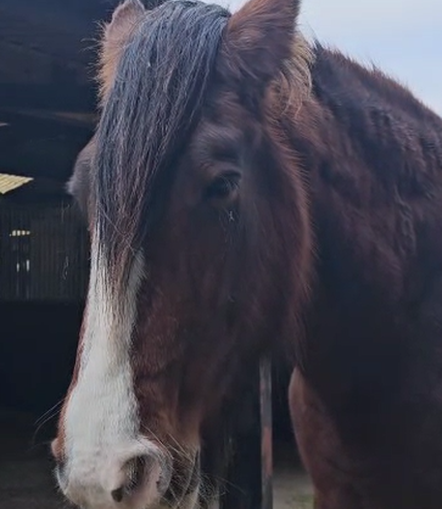
The Horse Grimace Scale (HGS)...
First developed by a team of researchers in 2014, the Horse Grimace Scale (HGS) is a scientifically validated tool that helps us recognise pain in horses through changes in their facial expressions. By carefully observing subtle muscle movements and tension, owners and carers can gain valuable insight into how a horse is feeling - even when the signs are easy to miss.
The HGS focuses on six key facial areas, known as facial action units. Each is scored from:
- 0 – no pain present
- 1 – pain moderately present
- 2 – pain obviously present
The six facial indicators of pain are:
- Stiffly backward ears
- Orbital (eye) tightening
- Tension above the eye area
- Prominent strained chewing muscles
- Mouth strained and pronounced chin
- Strained nostrils and flattening of the profile
Many of these signs are caused by facial tension, which contrasts sharply with the soft, relaxed look of a comfortable horse. Learning to recognise the difference between tension and relaxation is a vital skill for every horse owner and carer.
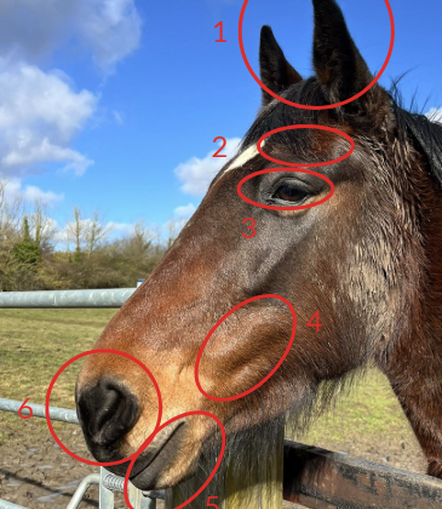
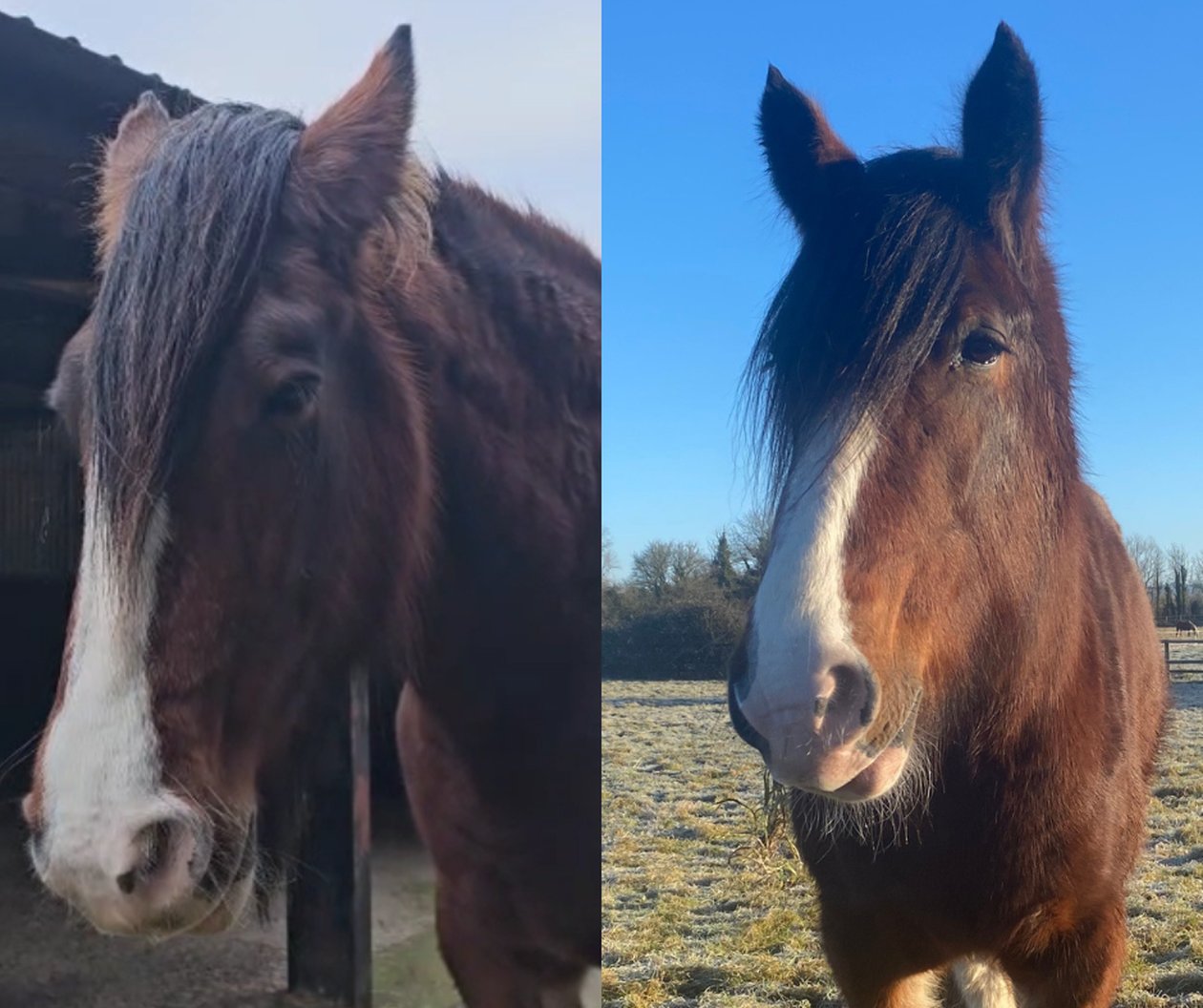
On the left shows Shire horse Lolly with her ears pinned back, tension above the eye area, eyes partially closed and her nostrils flared - all signs of pain, in contrast to Lolly on the right with a happy, relaxed face and no signs of tension.
The Equine Discomfort Ethogram...
An ethogram is a catalogue of observable behaviours or activities that describe how an animal interacts with its environment. The Equine Discomfort Ethogram (EDE), developed in 2021 after 35 years of research and behavioural observation, provides one of the most comprehensive guides to recognising signs of pain and discomfort in horses. This invaluable tool helps owners, carers, and professionals understand how subtle behavioural changes can indicate when a horse is struggling, long before more obvious signs appear.
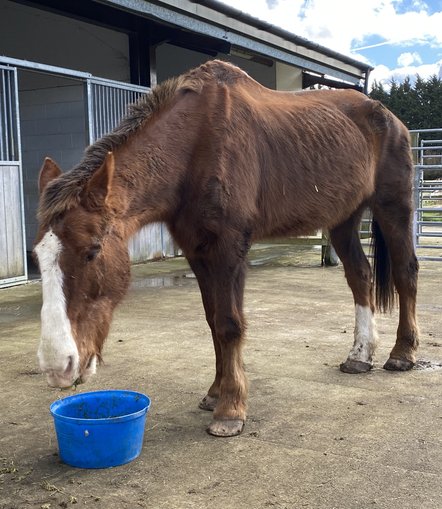
Recognising Behavioural Signs of Pain...
Some behaviours are easy to associate with pain, such as:
- A horse that is non-weight-bearing on one leg
- Quidding (dropping food while chewing)
- Uncharacteristic aggression or irritability
However, many signs of discomfort are far more subtle and can easily be mistaken for quirks, training issues, or mood changes. For example:
- Frequent weight-shifting between limbs may indicate the horse is struggling to find a comfortable stance.
- Auto-grooming (biting or rubbing at their own body) might not always be caused by insects, it can also signal internal discomfort or irritation.
- Repeatedly looking, glancing, or focusing on a specific part of the body can be a quiet but clear sign that something is wrong.
By learning to recognise these small but important behaviours, we can respond sooner and ensure our horses get the care and relief they need.
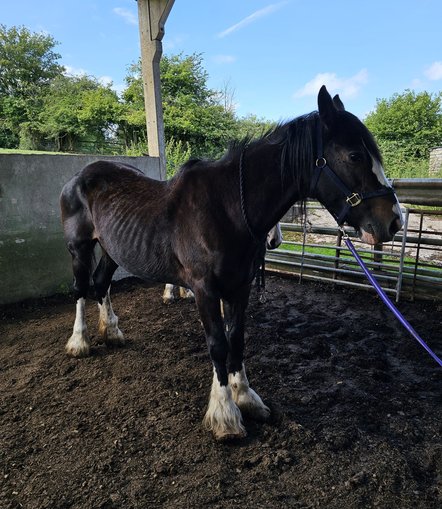
Signs of Stress in Horses...
Stress is a natural response to challenges and changes within the environment and is experienced by all animals, including horses. It helps them adapt to new situations, stay alert to danger, and learn from experience. In moderation, stress can even be beneficial to horses, as it can help them navigate through different or new experiences and learn how to respond appropriately by initiating curiosity and the natural fight-or-flight response that keeps horses safe in the wild.
However, when stress becomes long-term or chronic, it can seriously impact a horse’s physical health and emotional wellbeing. Understanding the difference between short-term (acute) and long-term (chronic) stress is essential for maintaining good equine welfare.
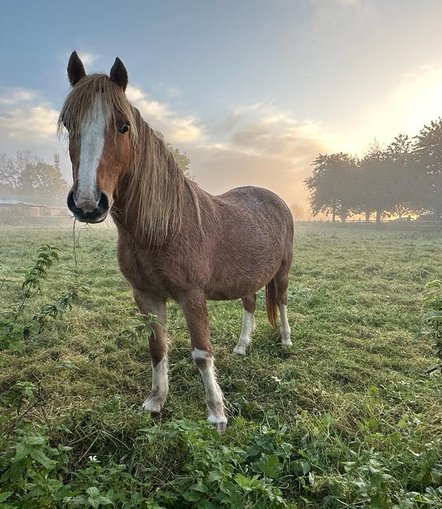
Acute Stress...
Acute stress happens in response to a sudden, short-term event. For example, a horse might spook when a bird flies out of a hedge. The immediate reaction to bolt, jump or tense is driven by instinct and usually passes quickly once the situation is over.
This natural fight-or-flight response is rapid and involuntary, helping the horse react quickly to potential danger. The way a horse experiences the outcome of this reaction can influence how it responds to similar situations in the future, shaping both learning and behaviour over time.
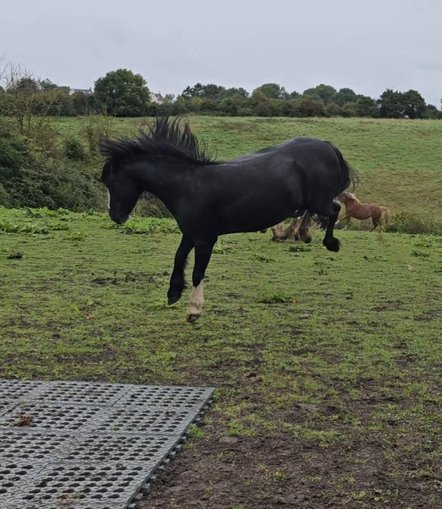
Chronic Stress...
Chronic stress occurs when a horse experiences ongoing challenges or discomfort over a prolonged period. It can stem from physical factors (such as pain or illness), environmental factors (like confinement or isolation), or physiological factors (such as hormonal imbalances or poor nutrition). This persistent stress response is often linked to elevated cortisol levels, a hormone that helps the body cope with short-term stress but can become harmful when continuously high. Prolonged increases in cortisol can disrupt normal bodily functions, weaken the immune system, and interfere with digestion and recovery.
As a result, chronic stress may lead to behavioural changes, such as irritability or repetitive behaviours, which can act as coping mechanisms. Over time, this constant strain can contribute to serious health issues - one of the most common being Equine Gastric Ulcer Syndrome (EGUS), as well as reduced performance and overall wellbeing.
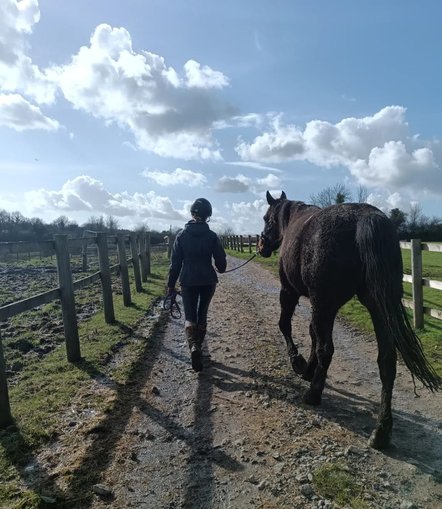
Causes and Signs of Long-Term Stress in Horses...
There are many factors that can contribute to prolonged stress in horses, including:
- Inadequate or changes to diet
- Housing conditions and environmental factors
- Pregnancy and reproduction
- Busy schedules
- Sudden changes to routine or environment
The effects of long-term stress can manifest both physically and behaviourally. Key signs to look out for include:
- Weight loss
- Gastric ulcers
- Weakened immune system
- Stereotypic behaviours
- Changes in behaviour
- Soreness and muscle tension
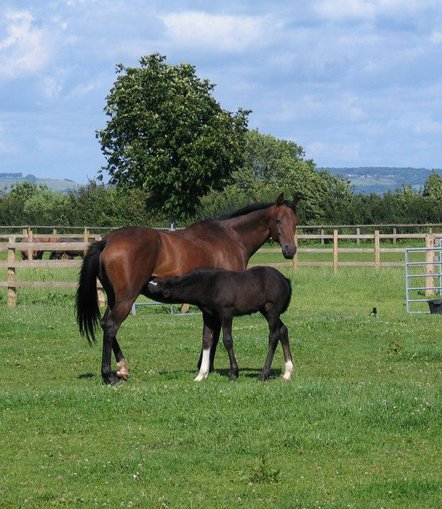
Recognising pain and stress in horses is essential for their health and wellbeing. Tools like the Horse Grimace Scale and Equine Discomfort Ethogram help owners identify subtle signs of discomfort, while understanding acute and chronic stress allows us to support both physical and mental health.
By observing behaviour carefully and seeking timely veterinary advice, we can prevent long-term problems, improve welfare, and strengthen the bond between horse and owner - helping horses live healthier and happier lives.
If you suspect your horse is showing any signs of pain or discomfort, please seek veterinary advice.
